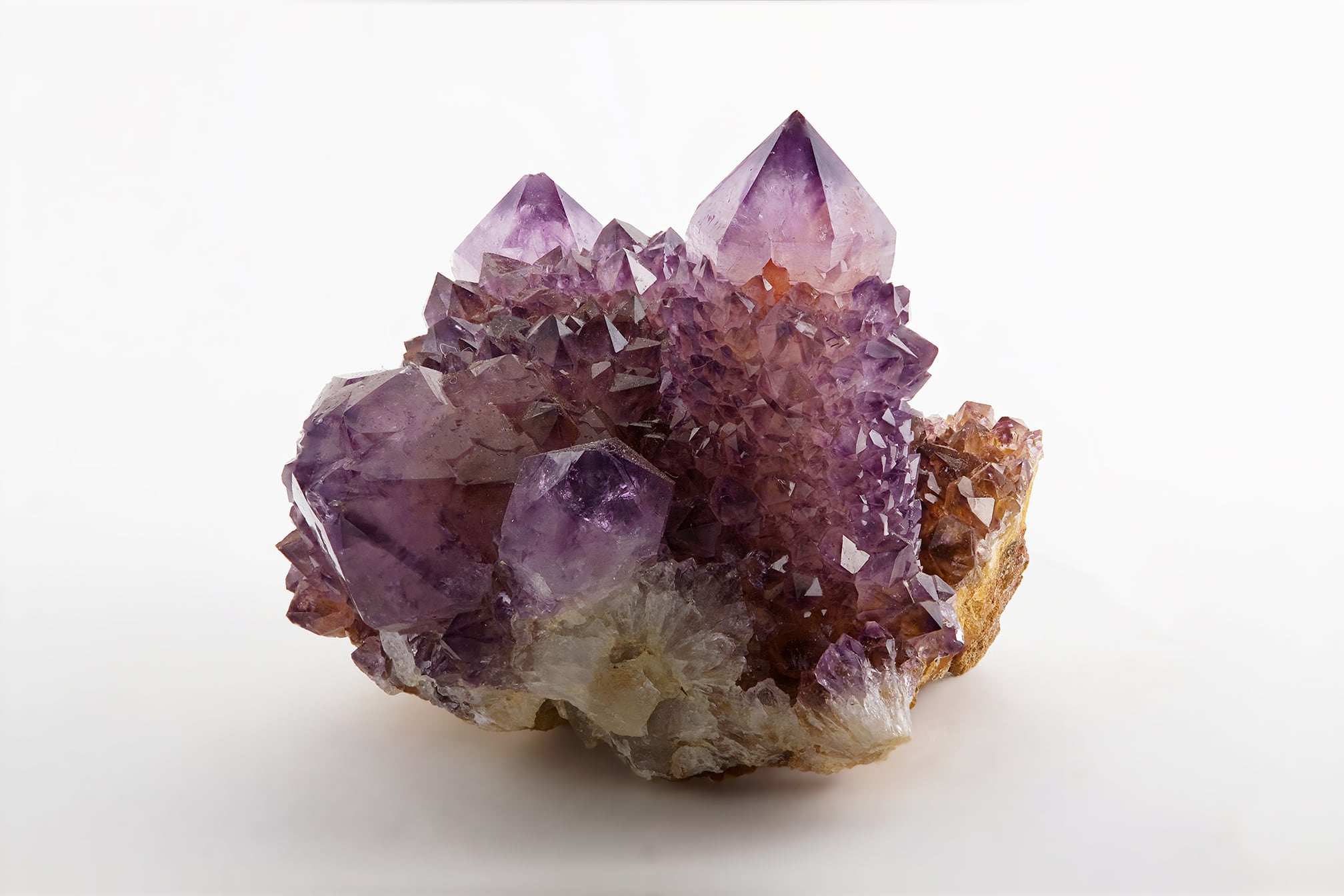Key Takeaways
- Amethyst is a purple quartz variant, treasured for its beauty and historical significance.
- Its color, ranging from light lavender to deep purple, is due to iron impurities and irradiation.
- Once a cardinal gem, amethyst’s value decreased after large deposits were found, but it remains sought after in jewelry.
- Heat treatment can alter its color, while prolonged light exposure may fade it.
- Amethyst has cultural significance, once believed to prevent intoxication and valued for its calming properties.
Amethyst has always held a special place in my heart. As a gem enthusiast, I’ve been captivated by its rich history and vibrant hues, which range from the softest lavender to the deepest purples. Its allure isn’t just skin-deep; the gem carries a legacy steeped in myth and mystique.
My journey with amethyst began on a crisp autumn morning during a visit to a quaint market in a historic town. Among the myriad of stalls, one particular vendor, an elderly man with eyes as twinkling as the gems he sold, beckoned me over. His table was a kaleidoscope of colors, but it was the amethyst pieces that caught my eye. He noticed my interest and, with a voice as smooth as the polished stones in his hand, began to recount tales of amethyst’s past.
“Did you know,” he started, with a conspiratorial lean, “that the Greeks believed amethyst could prevent intoxication? They even crafted drinking vessels from it.” His stories transported me to ancient times, where I imagined nobles sipping wine from gleaming amethyst goblets, believing they were shielded from drunkenness.
The structure of amethyst, as the vendor explained, owes its stability and hardness to its tetrahedral silicon dioxide framework. This robustness makes it perfect for jewelry, something that artisans have capitalized on for centuries. Holding a piece up to the light, he pointed out the subtle red and blue hues that danced within the purple, a testament to its complex formation process involving iron and other trace elements.
What fascinated me most was learning about the variations in amethyst’s color. The vendor showed me a range of specimens, from the pale, almost ethereal “Rose de France” to the intensely saturated “Deep Siberian” variety. Each piece told a story of its journey from the earth to the surface, shaped by geological processes and human craftsmanship.
Our conversation then shifted to the geodes and mines from where amethyst is sourced. He spoke of the Brazilian and Uruguayan fields with reverence, describing them as the heartlands of amethyst production. His eyes sparkled as he recounted his trip to the Empress of Uruguay, the largest amethyst geode he had ever seen, a marvel of nature’s artistry.
As our chat drew to a close, he imparted some practical advice on caring for amethyst. “Keep it away from direct sunlight and heat,” he cautioned, “or its vibrant colors might fade.” He also advised against harsh cleaning methods that could damage the delicate structure of the stone.
Leaving the market that day, I felt enriched by the lore and knowledge shared by the vendor. Amethyst was no longer just a pretty stone to me; it was a gem imbued with history, crafted by the earth, and cherished by civilizations throughout time.
Frequently Asked Questions
- What is the origin of amethyst’s name?
Amethyst derives from the Greek word ‘amethystos’, meaning “not intoxicated”, reflecting the ancient belief that the stone protected its bearer from drunkenness. - Why does amethyst have different colors?
The hue of amethyst is mainly due to iron impurities and the effects of irradiation, which alter the color depending on the concentration and state of the iron within the quartz structure. - How is synthetic amethyst created?
Synthetic amethyst is grown in laboratories through hydrothermal growth, mimicking the natural conditions under which the gem forms, producing crystals identical in chemical and physical properties to natural amethyst. - What factors affect the value of amethyst?
The color intensity and clarity are primary factors. Deep, vivid purple amethysts with minimal inclusions are the most prized and valuable. - Can the color of amethyst change over time?
Yes, prolonged exposure to sunlight or heat can cause amethyst to fade or change color, turning it yellowish or greenish, akin to citrine or prasiolite.
